|
Opinions Benchmarking hotel guest satisfaction and experiences 07 AUGUST 2018 8:17 AM The American Customer Satisfaction Index (ACSI) is an important benchmark to evaluate the quality of services provided by hotels and guest experience with various aspects of their hotel stay. The article summarizes the ACSI scores for the hotel industry and major hotel brands in 2017 and 2018. By Forrest Morgeson and A.J. Singh of 0 to 100). These scores have remained relatively stable (varying only +/-1%) across the 10 hotel companies evaluated as well. However, a wide dispersion of scores is noted when reviewing the scores across the hotel companies. |
|
Copyright © 2008-2018 STR, Inc. Page 1 / 4 |
|
These scores have remained relatively stable (varying only +/-1%) across the 10 hotel companies evaluated as well. However, a wide dispersion of scores is noted when reviewing the scores across the hotel companies. |
|
The high-scoring companies for the two years include Hilton, Marriott International, Starwood Hotel & Resorts Worldwide and Hyatt Hotels Corporation. These hotel companies have a diversified portfolio of hotel brands ranging from luxury to upper midscale, leaning more towards the upper price range. Hilton took top honors this year with a score of 82, followed closely by Marriott with a score of 81. Starwood ranked third (tied with Hyatt), at 79; as it is now part of the Marriott family, it will be interesting to watch Marriott’s management of guest experiences in their very large and diversified brand portfolio. The companies ranking relatively low in customer satisfaction had scores ranging from 77 (InterContinental Hotels Group, Best Western) to a low of 65 (G6 Hospitality). The common feature of these companies is that their portfolio of hotel brands is narrower and focused mainly on the lower price range, from midscale to economy. |
|
Copyright © 2008-2018 STR, Inc. Page 2 / 4 |
|
Hospitality). The common feature of these companies is that their portfolio of hotel brands is narrower and focused mainly on the lower price range, from midscale to economy. |
|
The above chart drills down further into the specific hotel brand scores and provides further insights into the performance of hotels regarding customer satisfaction. The top scoring hotel brand for 2018 was AC hotels by Marriott (an ACSI of 84). AC is an upscale, European-inspired, design-centric lifestyle brand which Marriott acquired in 2013 from a Spanish company. The company’s high score speaks to the broader trend of growing customer interest in lifestyle and unique properties, driven largely by a younger customer base, with the willingness to spend experiment. However, one should not discount the staple brands preferred by the baby boomers, such as Hilton Garden Inn (83), Embassy Suites (82), Hampton (82), Hilton Hotels & Resorts (82) and JW Marriott (82), which also had top scores. When reviewing the individual brand scores, some interesting insights emerge. High scores are not necessarily a function of chainscale. For example, one upscale hotel (Hilton Garden Inn) scored higher in satisfaction than all of the upper-upscale and even luxury hotels. This points to the basic premise of the ACSI model, in that satisfaction is function of both guest expectations (prior to their arrival) and the guest experience during their stay, including both service quality and the value proposition. Larger and full-service hotels such as Hilton Hotels, JW Marriott, Crowne Plaza, for example, had lower scores than some properties with more limited amenities such as AC hotels, Hilton Garden Inn, Embassy Suites and Hampton Inn. These findings suggest that perhaps more amenities might result in management control issues with regard to guest services. Furthermore, within the same brand family, an upper midscale brand such as Fairfield Inns and Suites performed better than Residence Inn by Marriott, an upscale brand. This could have perception implications for franchisees looking to develop hotels and the attractiveness of one brand vis-a-vis the development costs. Finally, not surprisingly the midscale and economy scale hotels tended to have lower ACSI scores, ranging from an ACSI of 78 (Baymont Inn) to 65 (both Days Inn and Motel 6). The portfolio footprint of these hotels tends to be more widely dispersed, both geographically and in the types of owners, who tend to be individuals versus institutions for the more upper-tiered hotels. Hotel guests are a powerful source of word-of-mouth advertising, marketing and sharing feedback about negative (and positive) service experiences. This exposure is further leveraged by instant feedback via multiple social media platforms. |
|
Copyright © 2008-2018 STR, Inc. Page 3 / 4 |
|
Hotel guests are a powerful source of word-of-mouth advertising, marketing and sharing feedback about negative (and positive) service experiences. This exposure is further leveraged by instant feedback via multiple social media platforms. |
|
The above chart illustrates the customer experience benchmarks across 11 important measures of the guest experience. It is important to note that the first point of contact with the hotel through the reservation and check-in processes had high scores of 85 and 86. This is a positive signal that the industry is paying attention to the impact of first impressions. The hardest and most impactful complaints by guests tend to be about staff attitudes. Hotels performed well with scores of 83 and 84. Other remote experiential touchpoints of call center and web interface are also very important, and here the scores were high. However, website satisfaction remained static. As customers make more and more purchases of goods and services via e-commerce platforms, hotels should stay alert to changing customer expectations with ongoing improvements to website design. While guests appreciate the extra touches provided by hotels, expectations for a clean, comfortable room, with good connectivity and in-room entertainment are basic needs. Based on the ACSI benchmarks, rooms are cleaner and more comfortable (82), in-room entertainment is better (76) and wireless speed and reliability has improved (+2% to 77). The lowest scores for guest experiences include quality of amenities, quality of food service and loyalty programs. A.J. Singh is the Professor of International Lodging, Finance and Real Estate Finance in The School of Hospitality Business. He has co-authored four textbooks, on International Hotel Management (2008) and Hospitality Asset Management (2009, 2015), and Best Practices in Sustainable Hotel Development and Operations was published in March, 2011. Dr. Singh was jointly responsible for the establishment of The Hospitality Business Real Estate Investment Management Minor in The School of Hospitality Business at Michigan State University. Forrest V. Morgeson III is Director of Research at the American Customer Satisfaction Index (ACSI) in Ann Arbor, Michigan. As Director of Research, Dr. Morgeson is responsible for managing ACSI’s academic research, advanced statistical modeling and analysis, and the company’s international projects and licensing program (Global CSI). Dr. Morgeson also holds the position of Instructor in the Department of Marketing at Michigan State University. The opinions expressed in this column do not necessarily reflect the opinions of Hotel News Now or its parent company, STR and its affiliated companies. Columnists published on this site are given the freedom to express views that may be controversial, but our goal is to provoke thought and constructive discussion within our reader community. Please feel free to comment or contact an editor with any questions or concerns. |
|
Copyright © 2008-2018 STR, Inc. Page 4 / 4 |

